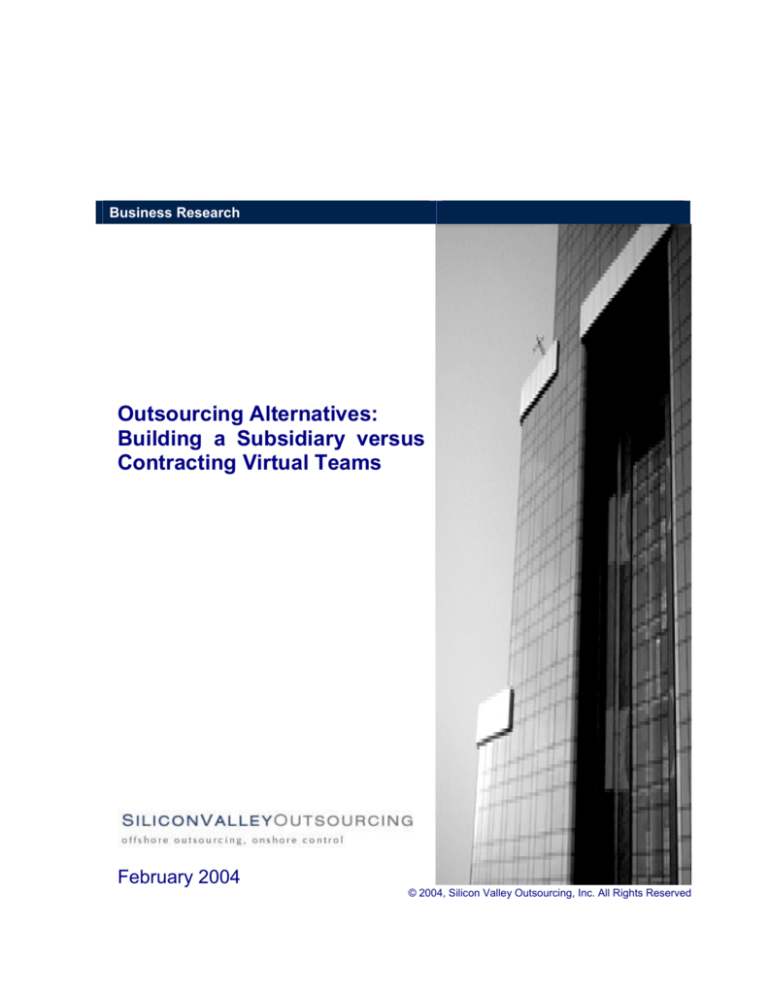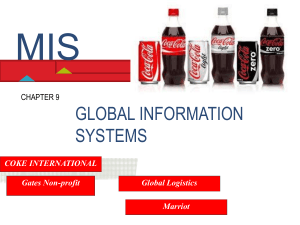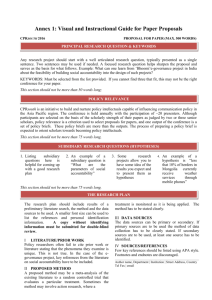
Business Research
Outsourcing Alternatives:
Building a Subsidiary versus
Contracting Virtual Teams
February 2004
© 2004, Silicon Valley Outsourcing, Inc. All Rights Reserved
Contents
Silicon Valley Outsourcing
Vince Corning
vcorning@svoutsourcing.com
Tel: (831) 612 9566
Fax: (831) 612 9565
Soquel, CA 95073
Building a Subsidiary versus Contracting Virtual Teams .........................1
Virtual Teams ........................................................................................................ 1
Effective Resource Utilization ...............................................................................................................1
Reduced Risk .......................................................................................................................................2
Access to Specialized Skill-sets ...........................................................................................................2
Reducing Management Complexity......................................................................................................2
Reduced Time-to-market ......................................................................................................................2
Fenwick & West LLP
Offshore Subsidiaries ............................................................................................ 3
Maximum Control over Culture and Quality..........................................................................................3
Fred M. Greguras
fgreguras@fenwick.com
Tel: (650) 988 8500
Fax: (650) 938 5200
Mountain View, California 94041
Knowledge Transfer..............................................................................................................................3
Mergers and Acquisitions .....................................................................................................................3
Reduced Dependence on the Third-party and Increased Dependence on Internal Resources ...........3
Summary Table ..................................................................................................... 4
The Emerging Shift................................................................................................ 4
Silicon Valley Outsourcing Inc. Business Research
Building a Subsidiary versus Contracting Virtual Teams
Building a Subsidiary versus Contracting Virtual
Teams
As more and more businesses are offshoring their non-core and, increasingly, core
activities, the debate continues regarding the best working model for offshoring. The
key question for businesses that have already made the decision to outsource is
whether to set-up an offshore subsidiary or to contract virtual teams (third-party
outsourcing). In this paper, we outline the benefits and disadvantages of these two
offshoring models.
Virtual Teams
Access to large talent pools promotes International competition, improves quality and
reduces cost. In the case of virtual teams, preformed teams with proven processes
and procedures reduce risk and improve time-to-market.
Capital Investment
Setting up an offshore subsidiary involves investment in facilities, infrastructure
(hardware, software, telecommunication, furniture, etc.) and human resources (both
recruitment and training). These costs can be reduced to a large extent when
outsourcing to a third-party vendor as their existing infrastructure and resources can
be utilized.
Operational Costs
Third-party vendors operate
at cost structures that are 1020% lower than that of the
offshore subsidiary1
In addition to low initial costs, leveraging virtual teams may also reduce operational
costs. This occurs because third-party vendors have usually achieved economies of
scale. According to the president and CFO of WNS Global Services, third-party
vendors operate at cost structures that are 10-20% lower than that of an offshore
subsidiary. These cost benefits are mainly derived from the following factors:
• Offshore subsidiary operations tend to pay higher salaries -- almost 20% more
than third-party vendors -- in order to maintain their global brand name and attract
the best professionals.
• Corporate overheads (IT, finance, HR, etc.) are also higher by approximately
30%, and cost of infrastructure by at least 10%.
­ Third-party vendors score better on negotiating facilities lease prices and
logistics as they are well aware of, and have more leverage in, the local
market scenario.
­ The overheads and infrastructure costs are distributed across multiple clients
as third-party vendors work for several clients at the same time.
Effective Resource Utilization
(“Buy only what you need” versus “build what you think you will need.”)
While virtual teams operate according to current outsourcing needs, the subsidiary
has to be set up anticipating future needs. Moreover, by contracting virtual teams, a
company can readily scale the number of resources required in accordance with
demand. This helps them to successfully manage peak-load pressure while avoiding
excess capacity. On the other hand, an offshore subsidiary needs to build teams and
facilities in anticipation of future work.
1
Source: http://economictimes.indiatimes.com/cms.dll/html/uncomp/articleshow?msid=52829
Silicon Valley Outsourcing Inc. Business Research
Building a Subsidiary versus Contracting Virtual Teams
Page 1
Figure 1 below illustrates the resource utilization by a third-party vendor in a baseload and peak-load situation.
Third-party vendors have the
flexibility to absorb peak
loads
Figure 1: Resource Utilization in Baseload and Peakload Situations by a Third-party
Vendor
Required
Team
Strength
20
Projectbased
(Flexibility
to absorb
peak
loads)
18
16
14
12
10
8
Virtual
Team
6
4
2
0
Baseload
Peakload
Source: Evalueserve
Reduced Risk
Contracting with virtual teams of a third party vendor reduces business risk in the
following ways:
• By using preformed teams with proven processes and procedures
• By transferring large upfront fixed costs to incremental variable costs
• By using management teams with local experience and the expertise to manage
and scale activities
Access to Specialized Skill-sets
Third-party vendors can provide the client with highly specialized skill-sets that can
be matched to the unique requirement of the process/project. Moreover, the risk of
obsolescence or additional investment in the event of changes in technology lies with
the offshore partner rather than the offshoring business.
Reducing Management Complexity
Third-party vendors are able to significantly reduce the management overhead both
during the start-up phase and steady-state operations. In the start-up phase, the
management of the offshore subsidiary faces many challenges, such as setting up a
legal entity, hiring and training people, and the transition of processes. Even if the
company has local managers, the difficulties can be significant. During steady-state
operations, management of the facility, ongoing training of employees, and the
continuous transition of processes require significant management efforts.
Conversely, the downside to offshoring business processes to third parties is that it
may reduce the scope for further innovation and process improvement.
Reduced Time-to-market
Companies that set up an offshore subsidiary typically take at least 6 to 12 months to
complete the cycle of establishing a legal entity, selecting a site, hiring and training
professionals, etc.
Silicon Valley Outsourcing Inc. Business Research
Building a Subsidiary versus Contracting Virtual Teams
Page 2
Virtual teams can start
almost immediate operations
and processes can be
transitioned in a very short
time.
Moreover, problems stemming from inexperience can easily endanger the success of
the whole operation. As compared to the offshore subsidiary, virtual teams can start
operations almost immediately and processes can be transitioned in a very short
period of time (from 2-3 weeks to 2-3 months, depending on the complexity of the
process).
Offshore Subsidiaries
Maximum Control over Culture and Quality
Because the business is responsible for creating its own company culture,
procedures and data security, it has maximum control over the offshore subsidiary
including intellectual property. It may be easier to integrate the offshore subsidiary by
transferring processes and procedures from its parent company. However, by doing
this, the business may miss the opportunity to re-evaluate existing practices which
may not be a good fit for the offshore subsidiary in terms of culture and process.
Conversely, in many cases, utilizing a third party vendor offers an opportunity to
adopt best-of-class practices across the enterprise.
Knowledge Transfer
Offshore subsidiaries face
attrition levels as high as
35%, in the absence of
devising new, more
meaningful roles for their
middle- and senior-level
managers2
Both models demand continuous training of the employees. Offshore subsidiaries
have an edge over the third-party vendor model, as it is relatively easy to provide
training, and share and retain knowledge. However, the employees of an offshore
subsidiary may not have the advantage of working on varied projects/assignments,
which may limit the development of better skills-sets. An offshore subsidiary faces
the risk of a high attrition rate, as they may not be able to devise new and more
meaningful roles for their middle- and senior-level managers2. In certain locations,
both models face the risk of an unstable workforce created by a greater demand than
the supply of qualified people.
Mergers and Acquisitions
The offshore subsidiary and its intellectual capital are taken into account when
valuing a parent company. This is particularly important when the parent company is
being merged or acquired by other firms. In most of the valuation exercises, the
number of engineers/technical professionals employed by the business is also
considered. In such situation, an offshore subsidiary becomes an asset. Conversely,
an offshore subsidiary may not be viewed as strategic by the acquiring company.
Additionally, it can tie up capital in an undesirable or redundant location that may not
be of interest to the acquiring company.
Reduced Dependence on the Third-party and Increased Dependence on
Internal Resources
A business may prefer to set up its own subsidiary in order to avoid being dependent
on third-party vendors. Many corporations have tried to reduce their dependency on
these vendors by distributing the work/processes to more than one location or
vendor. Distributing the work to more than one vendor encourages competition and
enhances the quality of deliverables. In addition, it minimizes the risk associated with
using a single third-party offshoring partner that could go out of business during the
term of the contract.
2
The data represents attrition rates at GE and AmEx subsidiaries in India. Maximum attrition was
observed in the middle and senior management levels. (Source:
http://www.businessworldindia.com/oct2703/indepth05.asp )
Silicon Valley Outsourcing Inc. Business Research
Building a Subsidiary versus Contracting Virtual Teams
Page 3
Summary Table
The table below provides a comparison between virtual teams and offshore
subsidiaries on various key parameters.
Table 1: Comparison between Virtual Teams and Offshore Subsidiaries on Key
Parameters
Initial investment and set –up
costs
Operational costs
Initial set-up time
Operations ramp-up time
Data security
Direct control over organisation
culture and operations
Direct control over internal
processes
Management complexity
Access to specialized skill sets
Valuation
Protection of intellectual property
Direct exposure to
external/macroeconomic factors
VIRTUAL TEAMS
OFFSHORE SUBSIDIARY
Low
High
Medium
Low
Low
Medium
High
High
High
High
Low
High
Medium
High
Medium
High
Low
Medium
High
Low
High
High
Medium
High
Source: Evalueserve
The Emerging Shift
There is no ‘one model fit all’ concept that ensures offshoring success. Developing
the correct blend of available models for offshoring is the key challenge for most
businesses. The following factors drive the selection of a particular model:
• The trade-off between the desired cost savings and the degree of operational risk
that an offshore facility contributes to the business
• Degree of control and desired cultural alignment with the offshore facility
• Degree of flexibility and scalability required
• Required speed of execution
Silicon Valley Outsourcing Inc. Business Research
Building a Subsidiary versus Contracting Virtual Teams
Page 4










